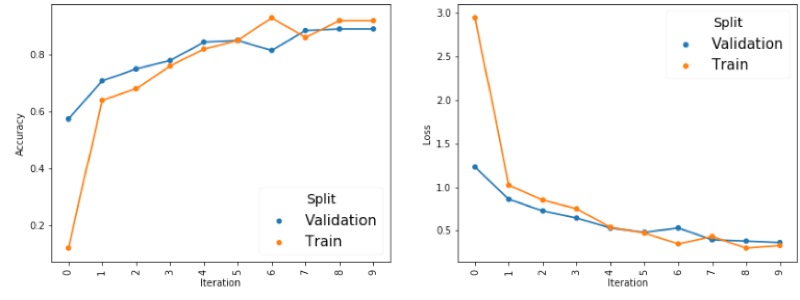The purpose of this repository is to practice deep-learning and reinforcement learning.
- Key concepts in NN
- Activation Functions
- Weight Initialization
- Batch Normalization
- Gradient Descent and Parameter Update
- CNN
- Basics/CNN layers
- Different CNN network architectures
- RNN
- Why RNN doesn't work - Gradient Vanishing
- LSTM
- GRU
- Implementation Caveats
- Collaborative Filtering
- User and Item based
- Matrix Factorization
- Deep Learning, and DL-version of SVD
- Ranking Algorithms
- Evaluation metrics (MAP, NDCG, ...)
- Modelling Approach (Point-wise, Pair-wise)
- CTR Prediction Model
- Logistic Regression
- Factorization Machine
- Field Factorization Machine
- GBDT + LR
- Wide and Deep
- Deep FM (Implementation here )
- Neural Factorization Machines
- Deep Interest Network
- Entire Space Multitask Model
- Reinforced Learning
- Feature Engineering
- Cold Start
- Build neural network from scratch using
numpywithout usingTensorfloworKeras. - The notebook includes the forward and backward propagation of different layers written in
numpy.- Basic Activation Functions
- Fully-connected Layer
- Different Update/Optimization Methods
- Batch Normalization Layer
- Drop-out Layer
- Convolutional layer
- Recurrent Layer
- This notebook includes different applications built from components in Part I (DNN, CNN)
- Dataset
- Synthetic data
- MNIST (2d, 3d)
- IRIS
- Gradient check
This notebook includes some practice examples to apply tensorflow to build DL models.
-
Example 1:
- Methodology: CNN
- Tool: Tensorflow Estimator API
- Dataset: MNIST
-
Example 2:
- Methodology: RNN (LSTM)
- Tool: Tensorflow Estimator API
- Dataset: Synthetic
-
Example 3:
- Methodology: RNN (LSTM)
- Tool: Tensorflow Lower-level API
- Dataset: Synthetic
- Concept Notes on GAN network
- Practice with an example based on MNIST dataset to generate fake digits.
Practice with Tensorflow package for deep learning models:
- Eager Execution
- Estimator API
- Built-in classifier
- Customized classifier
- Dataset API
- Keras with TF backend
- Sequential model
- Model class with functional API (LSTM example)
This notebook works through extensive examples of using opencv for image processing
- Basics
- Thresholds
- Transformations
- Filtering
- Detection
- Hough Line Transformation
- Example: Traffic Lane Detection
This notebook applies the openface package (http://cmusatyalab.github.io/openface/) on a image similarity calculation problem, and gives some interesting results.
A comparison of computational performance between CPU and GPU
- Implemented a simple CNN model applied on MNIST dataset
- Compare computional performance by running the notebook on a GPU instance on Google Cloud Platform (GCP)




